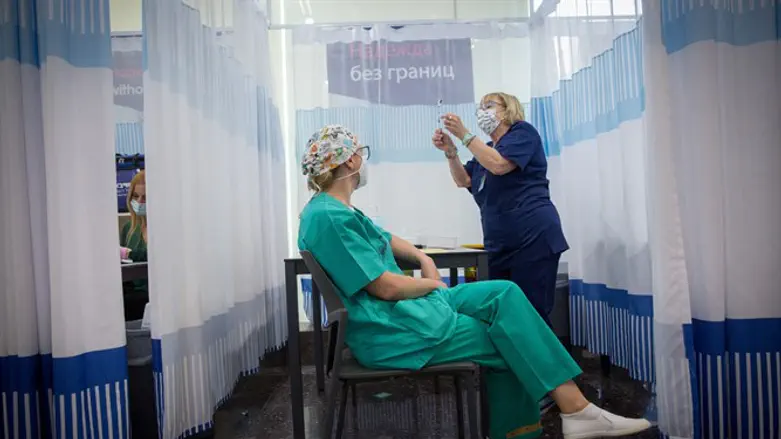
The coronavirus infection coefficient continues to fall in Israel, dropping to its lowest level since October.
According to data released by the Health Ministry Wednesday morning, the infection coefficient fell to 0.68 as of March 6th – the latest date for which information on the coefficient is available due to the 10-day delay between the date of actual infection and test results.
That is far below the 1.0 R reproduction rate, which marks the level of spread needed for the virus to maintain a stable number of infections in a population.
The infection coefficient last topped 1.0 on February 24th, when it hit 1.02, before falling sharply. On Tuesday, the reported coefficient was 0.73, indicated the level for March 5th.
A total of 1,472 new cases of the virus were diagnosed Tuesday, marking a sharp decline in the infection rate. Of all tests conducted Tuesday, just 2.1% came back positive, down from 2.5% Monday, 2.4% Sunday, and 3.0% Saturday. That is the lowest level since December 1st, when it 1.9% of tests came back positive.
There are currently 25,941 known active cases of the virus in Israel, including 922 cases requiring hospitalization.
Of those, 578 patients are in serious condition, down from 603 patients on Tuesday, 626 on Monday, and down from 637 seriously ill patients on Sunday. Wednesday’s level is the lowest since December 25th.
The number of coronavirus-related fatalities now stands at 6,051, including 11 deaths reported Tuesday and two Wednesday morning.
Thus far, 5,140,261 Israelis have received at least one dose of the vaccine, or 55.28% of the population, with 46.91% of, or 4,362,416 people having received two doses.
Nearly nine-out-of ten (89.4%) of Israelis over 90 have received both doses, with 96.3% having received at least one dose. A higher percentage (91.6%) of Israelis in their 70s received both doses, with 96.5% having received at least one dose.
Just over half (53.4%) of people in their 20s have received both doses, with 70.0% have received at least one dose.
